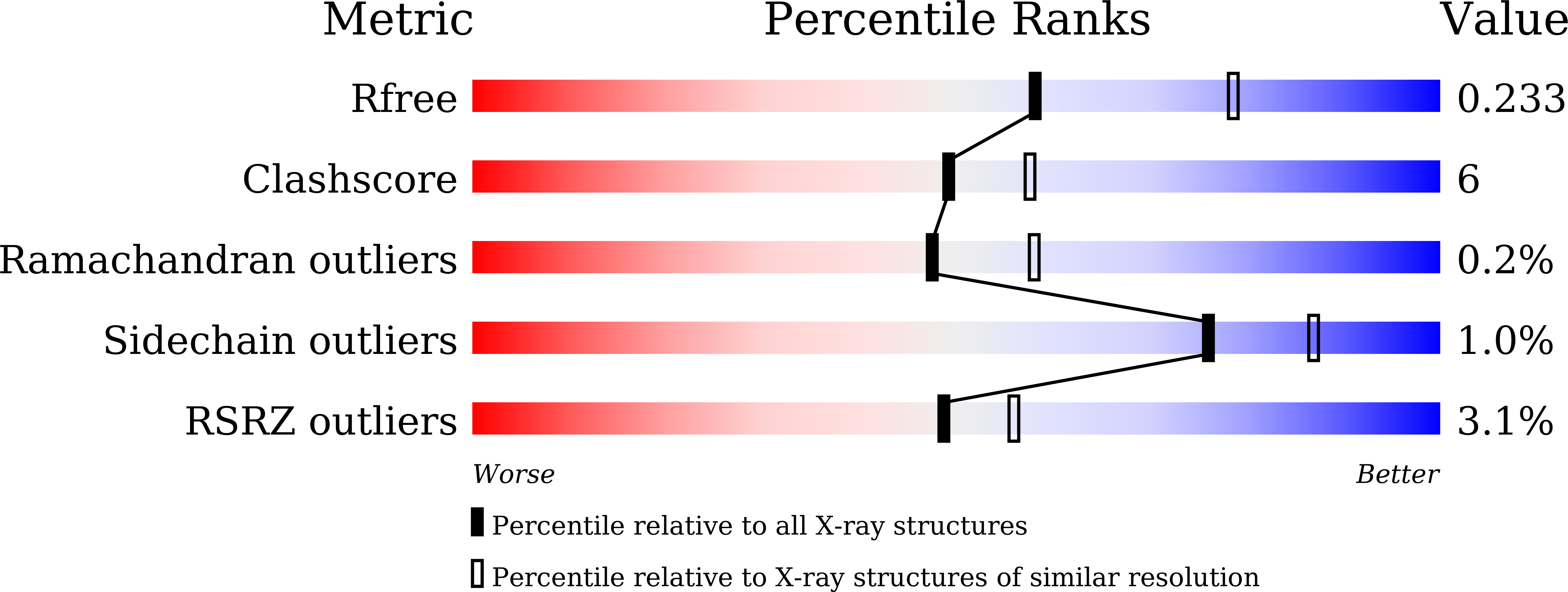Crystal structure of the Epithiospecifier Protein, ESP from Arabidopsis thaliana provides insights into its product specificity
Zhang, W., Wang, W., Liu, Z., Xie, Y., Wang, H., Mu, Y., Huang, Y., Feng, Y.(2016) Biochem Biophys Res Commun 478: 746-751
- PubMed: 27498030
- DOI: https://doi.org/10.1016/j.bbrc.2016.08.019
- Primary Citation of Related Structures:
5GQ0 - PubMed Abstract:
Specifier proteins are important components of the glucosinolate-myrosinase system, which mediate plant defense against herbivory and pathogen attacks. Upon tissue disruption, glucosinolates are hydrolyzed to instable aglucones by myrosinases, and then aglucones will rearrange to form defensive isothiocyanates. Specifier proteins can redirect this reaction to form other products, such as simple nitriles, epithionitriles and organic thiocyanates instead of isothiocyanates based on the side chain structure of glucosinolate and the type of the specifier proteins. Nevertheless, the molecular mechanism underlying the different product spectrums of various specifier proteins was not fully understood. Here in this study, we solved the crystal structure of the Epithiospecifier Protein, ESP from Arabidopsis thaliana (AtESP) at 2.3 Å resolution. Structural comparisons with the previously solved structure of thiocyanate forming protein, TFP from Thlaspi arvense (TaTFP) reveal that AtESP shows a dimerization pattern different from TaTFP. Moreover, AtESP harbors a slightly larger active site pocket than TaTFP and several residues around the active site are different between the two proteins, which might account for the different product spectrums of the two proteins. Together, our structural study provides important insights into the molecular mechanisms of specifier proteins and shed light on the basis of their different product spectrums.
Organizational Affiliation:
Beijing Key Lab of Bioprocess, College of Life Science and Technology, Beijing University of Chemical Technology, 15 BeiSanHuan East Road, P.O. Box 53, Beijing 100029, PR China.














